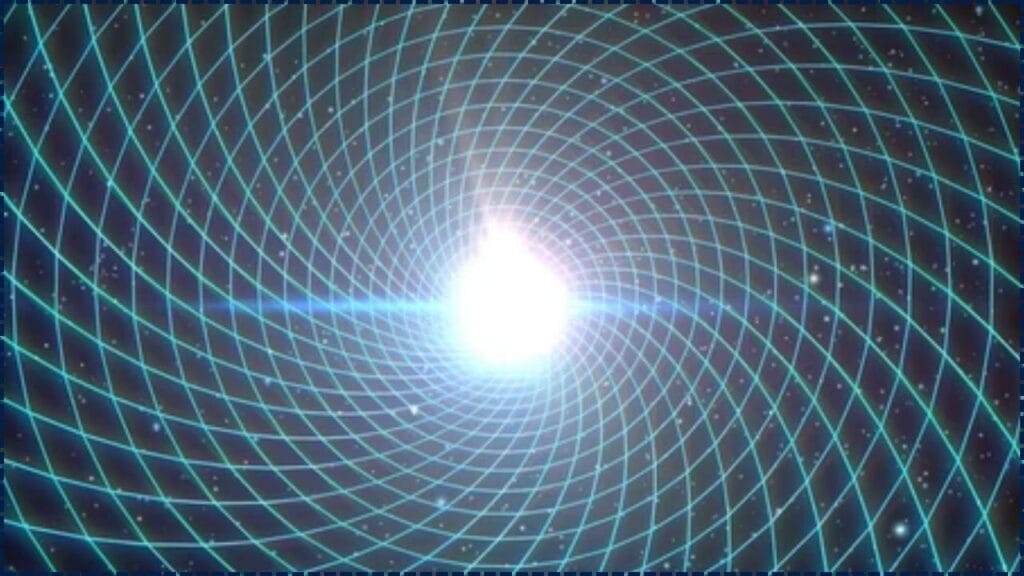Ever wondered if there’s more to the universe than meets the eye? Recent theoretical research suggests the existence of a hidden fifth dimension, potentially revolutionizing our understanding of the cosmos.

Portal to the Fifth Dimension
| Aspect | Details |
|---|---|
| Main Topic | Proposal of a fifth dimension to explain dark matter and fundamental physics anomalies |
| Scientific Basis | Extension of the “warped extra dimension” (WED) model from 1999, integrating fermions interacting through a fifth dimension |
| Dark Matter Connection | Hypothetical fermions traversing the fifth dimension could constitute dark matter, explaining its gravitational effects without direct detection |
| Detection Challenges | Current technology, including the Large Hadron Collider, lacks the capability to detect such particles; future advancements in gravitational wave detectors may help |
| Implications | Offers potential solutions to the hierarchy problem and unification of fundamental forces, prompting a reevaluation of existing physics models |
The proposition of a fifth dimension accessible through fermionic portals offers an intriguing solution to the dark matter mystery and challenges our current understanding of the universe. While still theoretical, this model encourages the exploration of new physics beyond the Standard Model, potentially leading to groundbreaking discoveries in cosmology and particle physics.
As technology advances, particularly in gravitational wave detection, we may soon have the tools necessary to test these bold ideas, bringing us closer to unraveling the universe’s deepest secrets.
Understanding the Fifth Dimension
In our everyday experience, we perceive the universe in four dimensions: three spatial dimensions (length, width, height) and one temporal dimension (time). However, theoretical physics has long entertained the possibility of additional dimensions beyond our perception.
The concept of a fifth dimension isn’t new. The Kaluza–Klein theory, developed in the 1920s, introduced the idea of a fifth dimension to unify gravity and electromagnetism. In this framework, the extra dimension is compactified, meaning it’s curled up so tightly that it’s imperceptible to us.
Building on this, the “warped extra dimension” (WED) model, proposed in 1999, suggests that the fifth dimension could be warped in such a way that it explains the relative weakness of gravity compared to other fundamental forces. This warping could also provide a natural explanation for the mass hierarchy problem in particle physics.
The Dark Matter Enigma
Dark matter is a form of matter that doesn’t emit, absorb, or reflect light, making it invisible to current detection methods. Yet, its existence is inferred from gravitational effects on visible matter, such as the rotation of galaxies and the bending of light from distant objects.
Despite constituting about 27% of the universe’s mass-energy content, the true nature of dark matter remains one of the most significant unsolved problems in physics. Traditional models within the Standard Model of particle physics fail to account for dark matter, prompting scientists to explore theories beyond it.

The New Proposal: Fermions and the Fifth Dimension
A recent study published in The European Physical Journal C by scientists from Spain and Germany introduces a novel approach to the dark matter problem. The researchers propose that certain fermions—fundamental particles like electrons and quarks—could interact with a warped fifth dimension, creating a “portal” through which they traverse.
In this model, these fermions could acquire mass through their interaction with the fifth dimension, leading to the formation of “fermionic dark matter.” This dark matter would exist in a hidden sector, influencing the universe’s structure and behavior through gravity, yet remaining undetectable by conventional means.
Challenges in Detection
One of the primary hurdles in validating this theory is the detection of the proposed particles and their interactions with the fifth dimension. Current particle accelerators, including the Large Hadron Collider (LHC), lack the energy levels required to observe these phenomena directly.
However, advancements in gravitational wave detection offer a promising avenue. Instruments like the Laser Interferometer Gravitational-Wave Observatory (LIGO) in the United States and the Virgo interferometer in Italy are designed to detect ripples in spacetime caused by massive cosmic events. If fermionic dark matter influences gravitational waves, these detectors might capture indirect evidence supporting the fifth dimension theory.
Implications for Physics
If validated, this theory could have profound implications:
- Unification of Forces: It could provide a framework to unify gravity with the other fundamental forces, a long-sought goal in physics.
- Resolution of the Hierarchy Problem: By explaining why gravity is significantly weaker than other forces, it addresses the hierarchy problem in particle physics.
- Advancement in Cosmology: Understanding dark matter through this lens could offer insights into the universe’s formation, structure, and ultimate fate.
Related Links
Astronomers Detect Bizarre Repeating Signals From Space — Unlike Anything Ever Seen Before
300-Meter Megatsunami Could Devastate US Coast — Scientists Raise Urgent Red Flags
Turn Leftover Veggies into a Tasty Protein Meal – Try This Simple Oven or Air Fryer Recipe
Real-World Analogy: Think of a Flatland World
Imagine you’re a two-dimensional creature living on a sheet of paper. You know up, down, left, right—but not “above.” One day, a 3D object (say, a ball) drops through your world. All you see is a circle that appears, grows, and disappears. You can’t see the whole ball because you’re not wired for that extra dimension.
That’s us, living in 4D, with 5D physics happening all around us—in ways we can only imagine for now.
FAQs About Portal to the Fifth Dimension
Q1: Is there experimental evidence for the fifth dimension?
A: Currently, there is no direct experimental evidence. The theory is based on mathematical models and awaits validation through future experiments, particularly in gravitational wave detection.
Q2: How does this theory differ from previous dark matter models?
A: Traditional models often propose new particles within the Standard Model framework. This theory extends beyond it, introducing a fifth dimension where fermions could exist and interact, offering a novel explanation for dark matter.
Q3: What are the next steps for this research?
A: Theoretical refinement of the model and the development of experiments capable of detecting the proposed phenomena, especially through gravitational wave observations.
Q4: Could this theory impact other areas of physics?
A: Yes, it could influence our understanding of fundamental forces, particle masses, and the overall structure of the universe.








